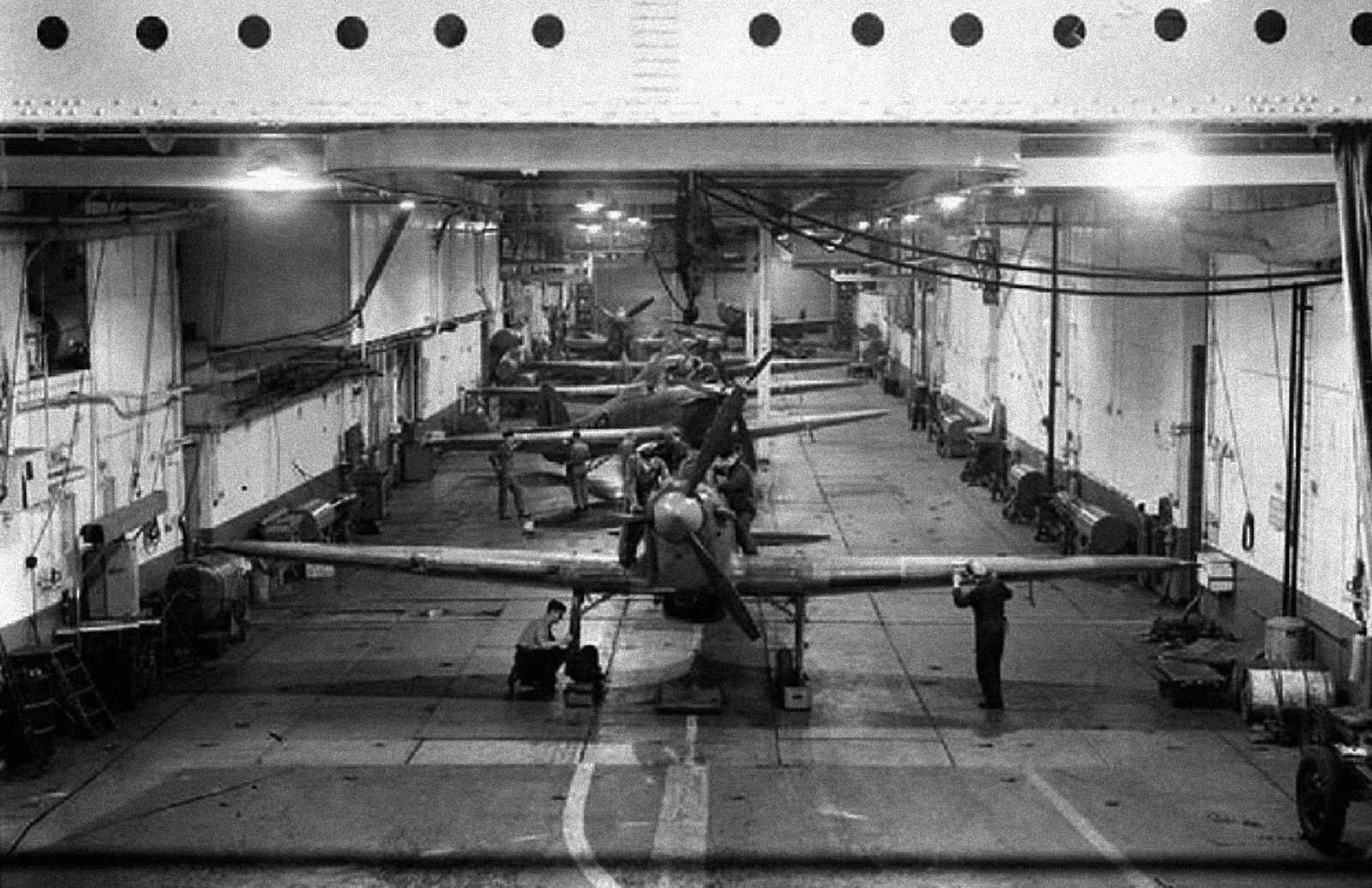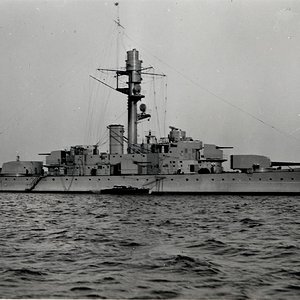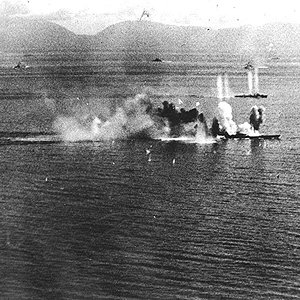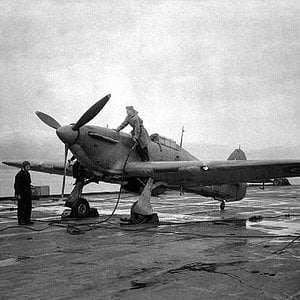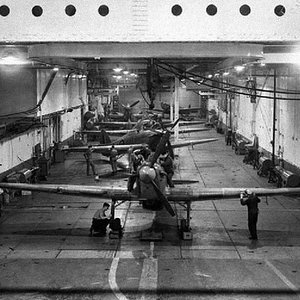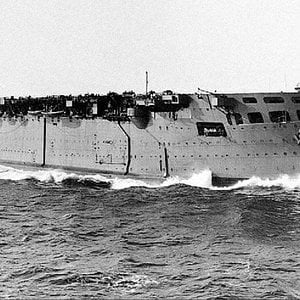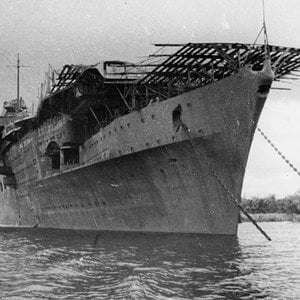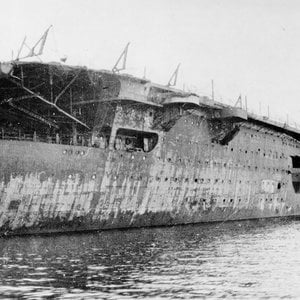Navigation
Install the app
How to install the app on iOS
Follow along with the video below to see how to install our site as a web app on your home screen.
Note: This feature may not be available in some browsers.
More options
You are using an out of date browser. It may not display this or other websites correctly.
You should upgrade or use an alternative browser.
You should upgrade or use an alternative browser.
Receiving their orders, the pilots of the Hawker Hurricanes and Blackburn Skuas measured the distance and finalized their flight plans. At 400 miles, the island of Malta was certainly within range — in fact, the Hurricanes should have had about 45 minutes of fuel remaining on arrival. The only problem was the weather, which made navigation less than certain. Compounding the problem was that while some of the pilots were Battle of Britain veterans, others were relatively green — and at that time, most fighter pilots navigated by landmarks only and had little or no formal over water navigation training.
The flights would launch in two groups an hour apart to give time to spot and fuel the planes on the decks of the HMS Argus. A Short Sunderland flying boat would meet the first flight en route — just 75 miles ahead at the Galite Islands. The Sunderland would help navigate the fighter planes safely to Luqa Airfield. The second flight would be met by a second airplane from Malta, a bomber that would depart with an experienced navigator on board as well. Thus, the fighters from the HMS Argus expected to meet the escort about 30 minutes after departure and then fly the remaining 90 minutes or so to Malta.
The HMS Argus, as seen during WWII with a Hawker Hurricane landing on its deck. This WWI era aircraft carrier served limited roles in the Mediterranean.
From the start, things didn’t go as planned. The Hurricanes and Skuas in the first flight (and later second flight) used up one third of their reserve fuel taking off and forming up before they headed eastward toward Malta. As well, with deteriorating weather, they flew at a lower altitude, just a few thousand feet over the waves. This consumed more fuel than was desired. Worse yet, the wind, which at takeoff had been a southern quartering tailwind, shifted around to a headwind, impeding their progress. As it happened, they were met successfully by the Short Sunderland off the Galite Islands. Just 12 minutes short of Luqa Airfield, still over the sea, the first of the Hurricanes ran out of fuel and ditched.
Abandoning the navigation mission, the Short Sunderland landed to pick up the pilot. The other five Hurricanes and one Skua of the first flight continued on to Malta which soon loomed into sight. However, four minutes after the first plane ditched, a second Hurricane ran out of fuel as well. The Sunderland took back off and headed east toward Malta, hoping to search for the pilot of the downed airplane en route. He was never found. The Skua and remaining four Hurricanes landed at Luqa just 8 minutes after the loss of the second Hurricane, apt demonstration of the fuel limitations facing the men — the last four Hurricanes had scant minutes of fuel left at landing.
The flights would launch in two groups an hour apart to give time to spot and fuel the planes on the decks of the HMS Argus. A Short Sunderland flying boat would meet the first flight en route — just 75 miles ahead at the Galite Islands. The Sunderland would help navigate the fighter planes safely to Luqa Airfield. The second flight would be met by a second airplane from Malta, a bomber that would depart with an experienced navigator on board as well. Thus, the fighters from the HMS Argus expected to meet the escort about 30 minutes after departure and then fly the remaining 90 minutes or so to Malta.
The HMS Argus, as seen during WWII with a Hawker Hurricane landing on its deck. This WWI era aircraft carrier served limited roles in the Mediterranean.
From the start, things didn’t go as planned. The Hurricanes and Skuas in the first flight (and later second flight) used up one third of their reserve fuel taking off and forming up before they headed eastward toward Malta. As well, with deteriorating weather, they flew at a lower altitude, just a few thousand feet over the waves. This consumed more fuel than was desired. Worse yet, the wind, which at takeoff had been a southern quartering tailwind, shifted around to a headwind, impeding their progress. As it happened, they were met successfully by the Short Sunderland off the Galite Islands. Just 12 minutes short of Luqa Airfield, still over the sea, the first of the Hurricanes ran out of fuel and ditched.
Abandoning the navigation mission, the Short Sunderland landed to pick up the pilot. The other five Hurricanes and one Skua of the first flight continued on to Malta which soon loomed into sight. However, four minutes after the first plane ditched, a second Hurricane ran out of fuel as well. The Sunderland took back off and headed east toward Malta, hoping to search for the pilot of the downed airplane en route. He was never found. The Skua and remaining four Hurricanes landed at Luqa just 8 minutes after the loss of the second Hurricane, apt demonstration of the fuel limitations facing the men — the last four Hurricanes had scant minutes of fuel left at landing.

